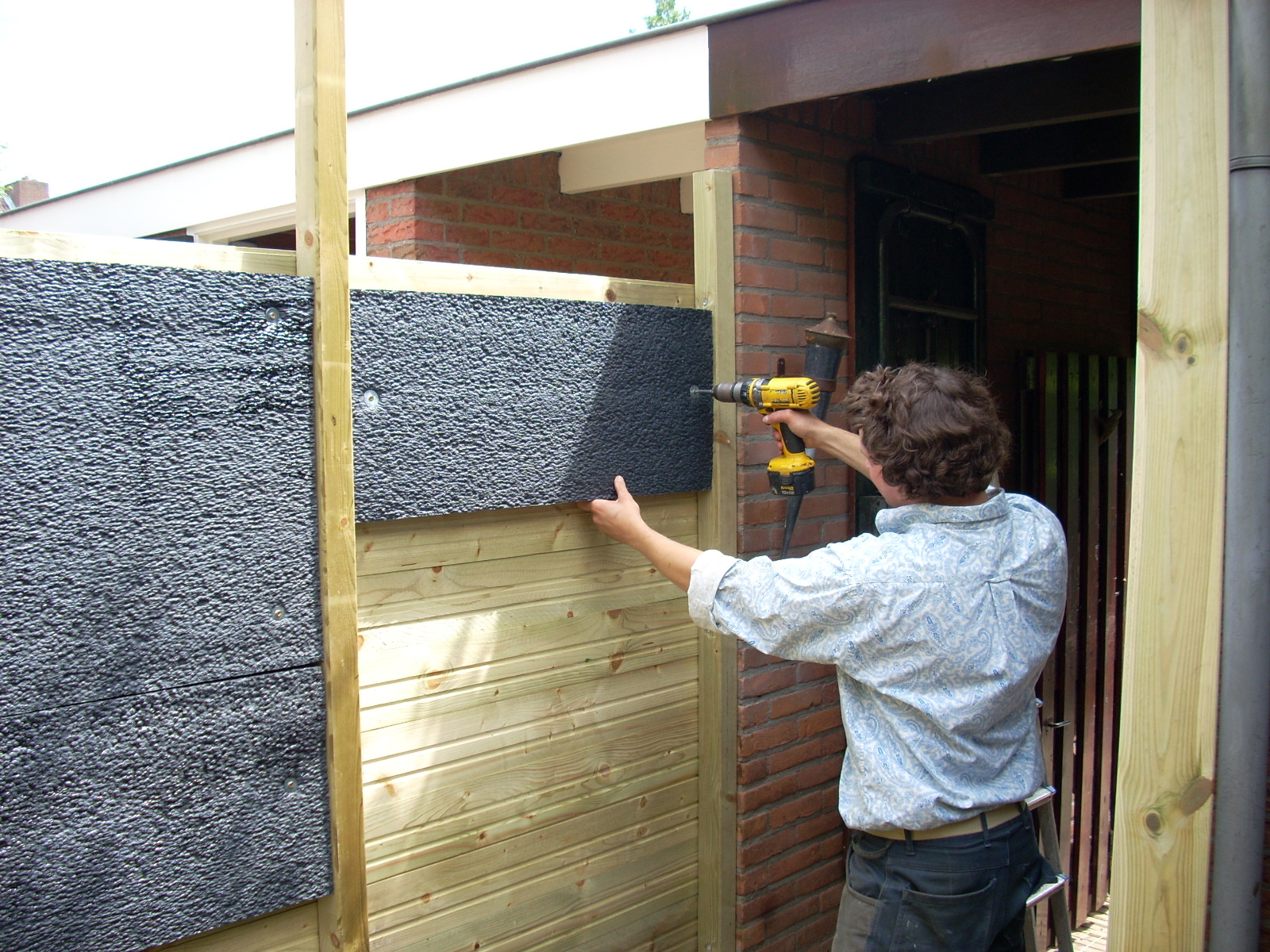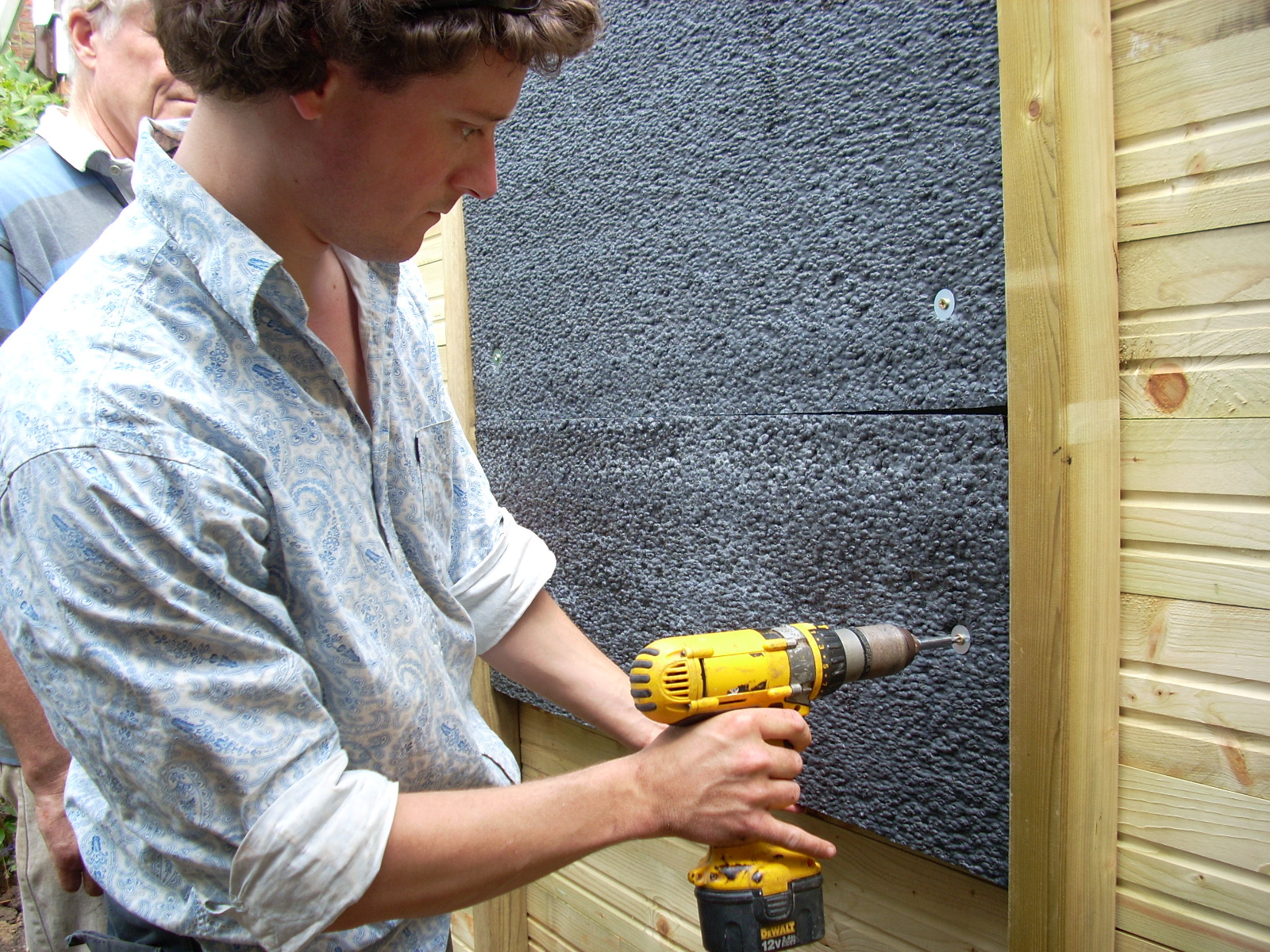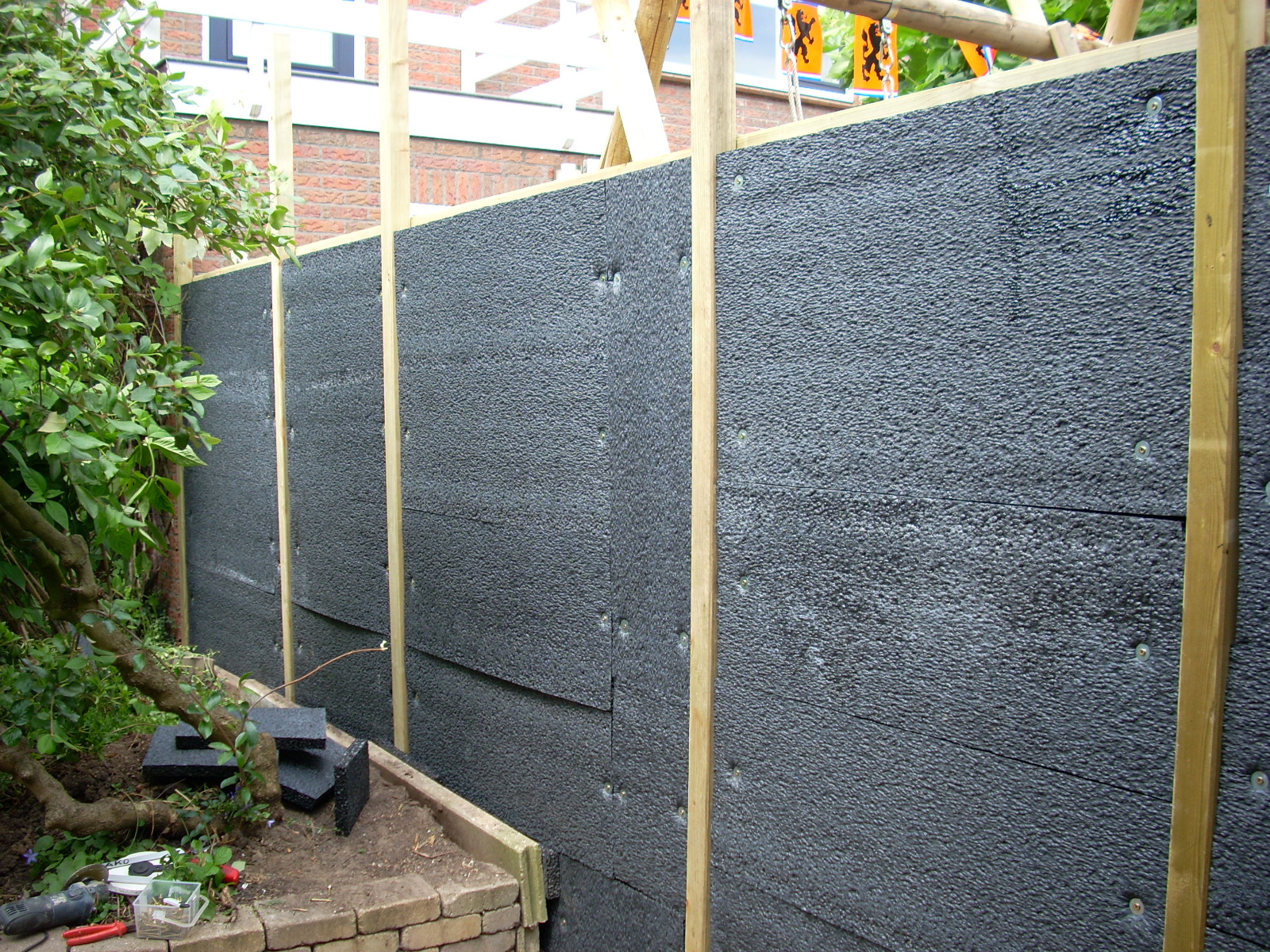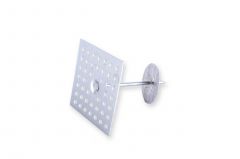The difference between soundproofing and sound-absorbtion
Soundproof fence
In order to keep noise outside or inside your courtyard or garden as much as possible, a soundproof fence (noise barrier) is required. Such a fence is made from heavy materials such as waterproof concrete plywood, brick or perspex. The fence should also be as high as possible, noise barriers along the highway are good examples. In order to keep sound outside your yard, you do not need any absorption material (!).
Sound-absorbing fence
In gardens or courtyards that contain a lot of pavement and little vegetation, there is often reverberation. Sounds of playing children or a party reflect to the vicinity through hard surfaces such as the pavement, facade, and fence, thus causing nuisance. By equipping these hard (reflection) surfaces with absorption material, the reverberation becomes less, resulting in a quieter and cosier courtyard or garden. Absorption material should therefore be mounted on the source side, the side where the sound is produced.
The acoustic fence
A modified fence with acoustic properties is constructed as follows. Against solid vertical beams, boards or heavy construction plates (waterproof concrete plywood for example) are mounted on one side, leaving no space inbetween them. Ideally, the fence should be at least 3 metres high and placed along the entire circumference of the garden. This minimum fence height is required, since sound moves spherically, meaning that the greater the distance between the source and the receiver, the greater this "sphere" becomes. So, you benefit optimally from an acoustic fence when it is high and when you can sit right behind it.
The absorption material should be mounted on the side where the reverberating sound originates, the source side. This ensures that at least one large absorption surface is created in the garden where the sound is produced. Sound from outside your garden, for example traffic noise, is only stopped when this noise is caused by reverberation in an adjacent garden, alley, street or playground (traffic noise generally does not come to your yard by means of reverberation!).
Absorption materials that can be used outdoors are Akotherm Basic D40 and Merfopol. The entire fence should be equipped with one of these products. Start approx. 30 cm from the ground and work your way to the top of the fence. These products are moisture resistant, but it is advisable to finish the edges, preventing water from penetrating. During frost, trapped water could cause damage.
You can mount Merfopol with adhesive pins or with screws and washers, as depicted on the photo.
Tip
Over time, the absorption materials will start to look less attractive, due to, say, splashing rainwater. Nevertheless, they don't lose their absorbing properties. Merfopol can be cleaned with a brush, but if you plant plants or ivy in front of it your garden will look greener, hiding the absorption material. For even better results, add natural absorption surfaces to the garden such as a lawn, dense shrubs and green strips.
Points of attention
- Distance and altitude
A height of at least 3 meters is desirable, because sound is distributed spherically, especially over greater distances. The bigger the distance between the sound source (for example, the street or neighbours) and the receiver (the person experiencing the nuisance), the higher the noise barrier or sound-absorbing fence should be. - Weight
Mass provides more resistance to sound. To realise high insulation values, you need a heavy fence or screen, using heavy building materials. - Closed
Standard fences allow sound to go through the boards. Provide a closed, closed fence.
Our products to make your fence quieter:
Questions? 
Do you have questions about this topic? Please feel free to contact us.

 Sound Absorption
Sound Absorption  Sound Insulation
Sound Insulation  Vibration Isolation
Vibration Isolation  Silent Ventilation
Silent Ventilation  Accessories
Accessories  Thermal & Acoustic Insulation
Thermal & Acoustic Insulation 



